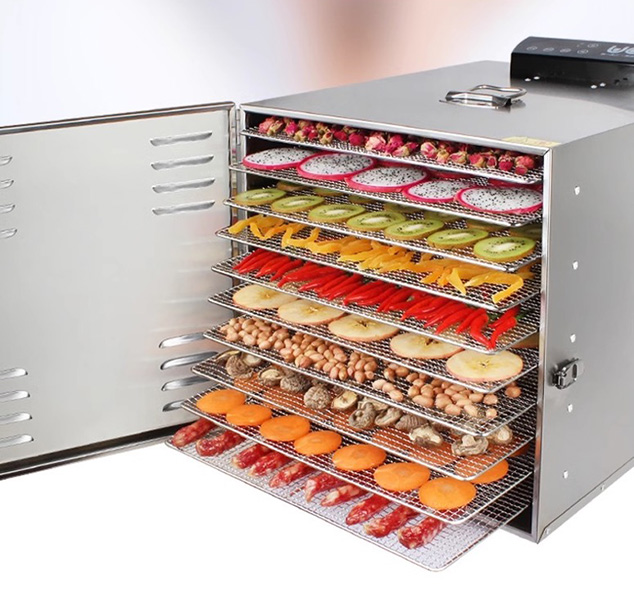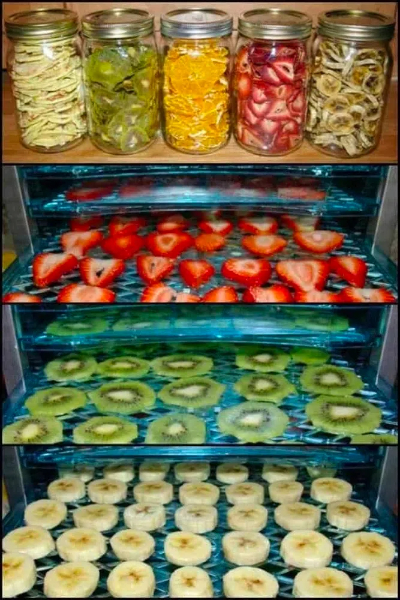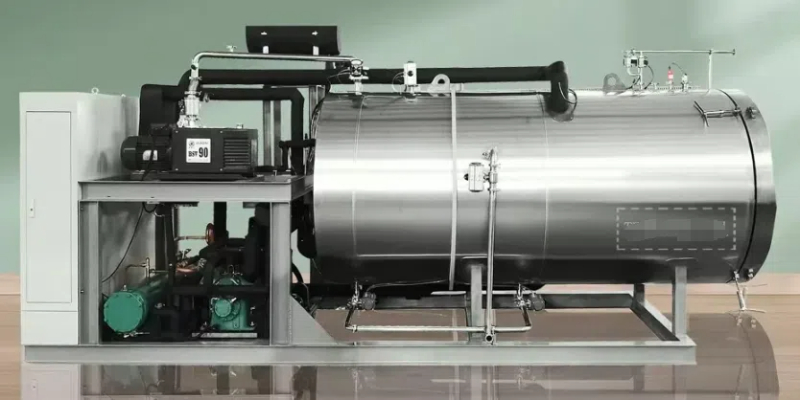
Content Menu
● Introduction
● Understanding Freeze Drying
● Benefits of Freeze Drying Food
● DIY Freeze Drying Methods
>> 1. The Freezer Method
>>> Steps:
>>> Pros:
>>> Cons:
>> 2. The Dry Ice Method
>>> Steps:
>>> Pros:
>>> Cons:
>> 3. The Salt and Ice Method
>>> Steps:
>>> Pros:
>>> Cons:
● Tips for Successful Home Freeze Drying
● Best Foods for Home Freeze Drying
● Creative Uses for Freeze Dried Foods
● Comparing Home Methods to Commercial Freeze Dryers
>> Home Methods:
>> Commercial Freeze Dryers:
● Conclusion
● Frequently Asked Questions
>> Q1: How long do home freeze dried foods last?
>> Q2: Can I freeze dry liquids at home?
>> Q3: Is it safe to freeze dry raw meat at home?
>> Q4: How do I rehydrate freeze dried foods?
>> Q5: Can I use a regular food dehydrator instead of freeze drying?
Introduction
Freeze drying is a remarkable food preservation technique that has gained popularity among home cooks, preppers, and food enthusiasts. While commercial freeze dryers can be expensive, there are several DIY freeze drying methods that allow you to achieve similar results without breaking the bank. In this comprehensive guide, we'll explore how to freeze dry food at home without a machine, discussing various techniques, their pros and cons, and tips for success.
Understanding Freeze Drying
Freeze drying, also known as lyophilization, is a process that removes moisture from frozen food through sublimation. This means that the water in the food transitions directly from a solid (ice) to a gas (vapor) without passing through the liquid state. The result is a product that retains its original shape, color, and nutritional value while being shelf-stable for years.
Benefits of Freeze Drying Food
Before we dive into the methods, let's explore why freeze drying is such a popular food preservation technique:
1. Long shelf life: Properly freeze dried foods can last up to 25 years when stored correctly.
2. Nutritional retention: The process preserves most of the food's original nutrients.
3. Lightweight: Freeze dried foods are incredibly light, making them perfect for camping or emergency kits.
4. Flavor preservation: The taste of freeze dried foods is often superior to other preservation methods.
5. Versatility: You can freeze dry a wide variety of foods, from fruits and vegetables to entire meals.

DIY Freeze Drying Methods
While commercial freeze dryers offer the most efficient and consistent results, there are several home freeze drying techniques you can try without specialized equipment. Let's explore these affordable freeze drying alternatives in detail.
1. The Freezer Method
This method is the simplest but also the most time-consuming way to freeze dry food at home.
Steps:
1. Wash and slice your food into small, uniform pieces.
2. Arrange the food in a single layer on a perforated tray or wire rack.
3. Place the tray in your freezer, ensuring good air circulation around the food.
4. Leave the food in the freezer for several weeks, checking periodically.
5. Test the food for dryness by removing a piece and allowing it to thaw. If it turns black, it's not fully dry.
6. Once completely dry, store the food in airtight containers or vacuum-sealed bags.
Pros:
- No special equipment required
- Very low cost
- Can be done with any home freezer
Cons:
- Extremely time-consuming (can take 2-6 weeks)
- Results may be inconsistent
- Ties up freezer space for extended periods
2. The Dry Ice Method
Using dry ice is a faster alternative to the freezer method and can produce better results.
Steps:
1. Prepare your food by washing, slicing, and freezing it solid.
2. Place the frozen food in freezer-safe bags, removing as much air as possible.
3. Put the bags in a cooler or insulated container.
4. Add dry ice to the container, using a 1:1 ratio of dry ice to food by weight.
5. Close the cooler lid loosely to allow gas to escape.
6. Leave undisturbed for 24-48 hours until the dry ice has completely sublimated.
7. Check the food for dryness and store in airtight containers.

Pros:
- Faster than the freezer method (1-2 days)
- Can process larger quantities of food at once
- Generally produces better results than the freezer method
Cons:
- Requires handling of dry ice, which can be dangerous if not done properly
- More expensive than the freezer method due to the cost of dry ice
- Results may still be less consistent than commercial freeze dryers
3. The Salt and Ice Method
This method uses a mixture of salt and ice to create a super-cold environment for freeze drying.
Steps:
1. Prepare your food as in the previous methods.
2. Create a mixture of salt and crushed ice in a large container.
3. Place your food in sealed plastic bags, removing as much air as possible.
4. Submerge the bags in the salt and ice mixture.
5. Replenish the ice as it melts, maintaining a temperature below freezing.
6. Leave for several days, checking periodically for dryness.
7. Once dry, remove and store in airtight containers.
Pros:
- Can be done with readily available materials
- Faster than the freezer method
- Doesn't require specialized equipment
Cons:
- Labor-intensive, requiring frequent ice replenishment
- Results may be inconsistent
- Limited capacity compared to other methods
Tips for Successful Home Freeze Drying
Regardless of the method you choose, these tips will help you achieve better results when freeze drying food without a machine:
1. Choose fresh, high-quality produce for the best flavor and nutritional value.
2. Cut foods into uniform, small pieces to ensure even drying.
3. Pre-freeze items before starting the freeze drying process.
4. Ensure good air circulation around the food during the drying process.
5. Be patient – proper freeze drying takes time, especially with DIY methods.
6. Store freeze dried foods in airtight containers with oxygen absorbers for maximum shelf life.
7. Keep freeze dried foods in a cool, dark place to maintain quality.
Best Foods for Home Freeze Drying
While you can freeze dry a wide variety of foods, some are better suited to home methods than others. Here are some excellent options to start with:
1. Fruits: Berries, apples, bananas, and peaches
2. Vegetables: Peas, corn, carrots, and green beans
3. Herbs: Basil, parsley, cilantro, and dill
4. Lean meats (cooked): Chicken, turkey, and lean beef
5. Dairy: Shredded cheese and yogurt drops
Creative Uses for Freeze Dried Foods
Once you've mastered the art of home freeze drying, you'll find numerous ways to incorporate these preserved foods into your daily life:
1. Homemade trail mix with freeze dried fruits
2. Instant soups and meals for camping or emergencies
3. Colorful, crunchy toppings for yogurt or ice cream
4. Lightweight snacks for hiking or travel
5. Ingredients for homemade spice blends and seasonings
6. Nutritious additions to smoothies and baked goods
Comparing Home Methods to Commercial Freeze Dryers
While DIY freeze drying methods can produce good results, it's important to understand their limitations compared to commercial freeze dryers:
Home Methods:
- Low initial cost
- No specialized equipment required
- Can be done with household items
- Results may be inconsistent
- Time-consuming process
- Limited capacity
Commercial Freeze Dryers:
- High initial investment
- Consistent, high-quality results
- Faster processing times
- Larger capacity
- More energy-efficient in the long run
- Greater control over the freeze drying process
Conclusion
Freeze drying food at home without a machine is a rewarding process that allows you to preserve a wide variety of foods for long-term storage. While it requires patience and attention to detail, the results can be impressive. By using methods like the freezer technique, dry ice method, or salt and ice approach, you can create your own freeze dried foods without investing in expensive equipment.
As you experiment with these techniques, you'll develop a better understanding of the freeze drying process and how different foods respond to various methods. Whether you're preparing for emergencies, creating lightweight meals for outdoor adventures, or simply exploring new food preservation techniques, home freeze drying opens up a world of possibilities for long-term food storage and culinary creativity.

Frequently Asked Questions
Q1: How long do home freeze dried foods last?
A1: When properly freeze dried and stored in airtight containers with oxygen absorbers, home freeze dried foods can last up to 25 years. However, the shelf life may vary depending on the food type and storage conditions. It's best to consume them within 5-10 years for optimal quality.
Q2: Can I freeze dry liquids at home?
A2: Freeze drying liquids at home can be challenging without a commercial freeze dryer. However, you can try freezing liquids in ice cube trays and then using the dry ice method for best results. Keep in mind that the outcome may not be as consistent as with solid foods.
Q3: Is it safe to freeze dry raw meat at home?
A3: It's generally not recommended to freeze dry raw meat at home due to food safety concerns. If you want to freeze dry meat, it's best to cook it thoroughly first, then freeze dry the cooked meat using one of the home methods described in this article.
Q4: How do I rehydrate freeze dried foods?
A4: To rehydrate freeze dried foods, simply add warm water until the food reaches its original consistency. The amount of water needed will vary depending on the food type. Start with a small amount and add more as needed. Most freeze dried foods will rehydrate within 5-10 minutes.
Q5: Can I use a regular food dehydrator instead of freeze drying?
A5: While food dehydrators and freeze dryers both remove moisture from food, they work differently and produce different results. Dehydrators use heat to remove moisture, which can affect the food's texture and nutritional content. Freeze drying preserves more of the food's original qualities. However, if you don't have access to freeze drying methods, a food dehydrator can still be a useful tool for food preservation.












